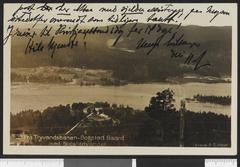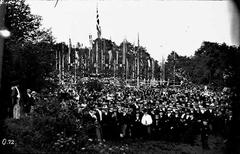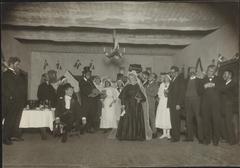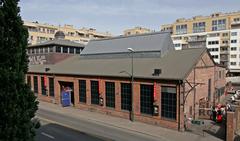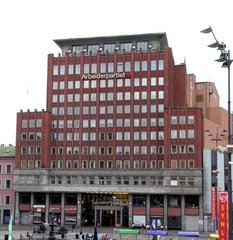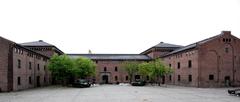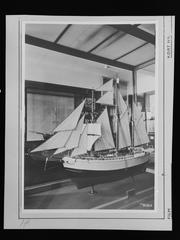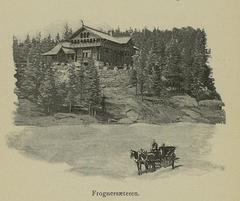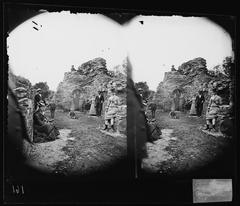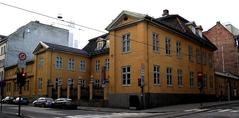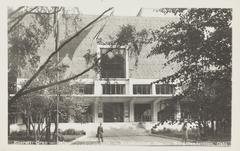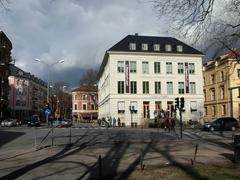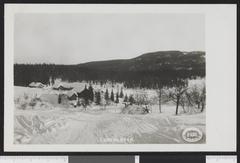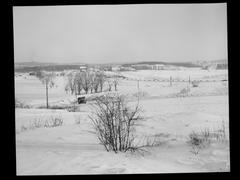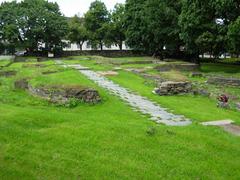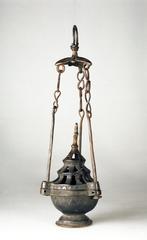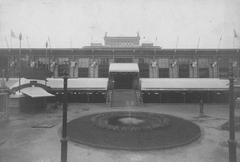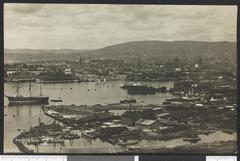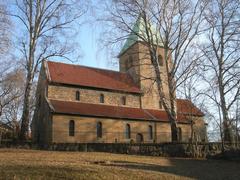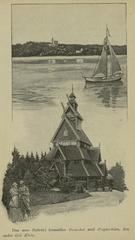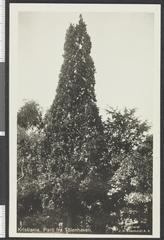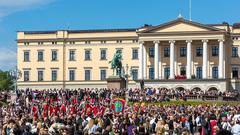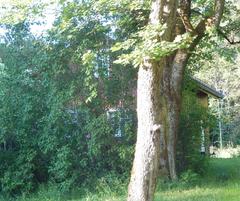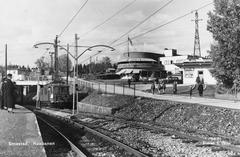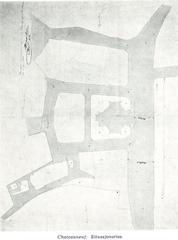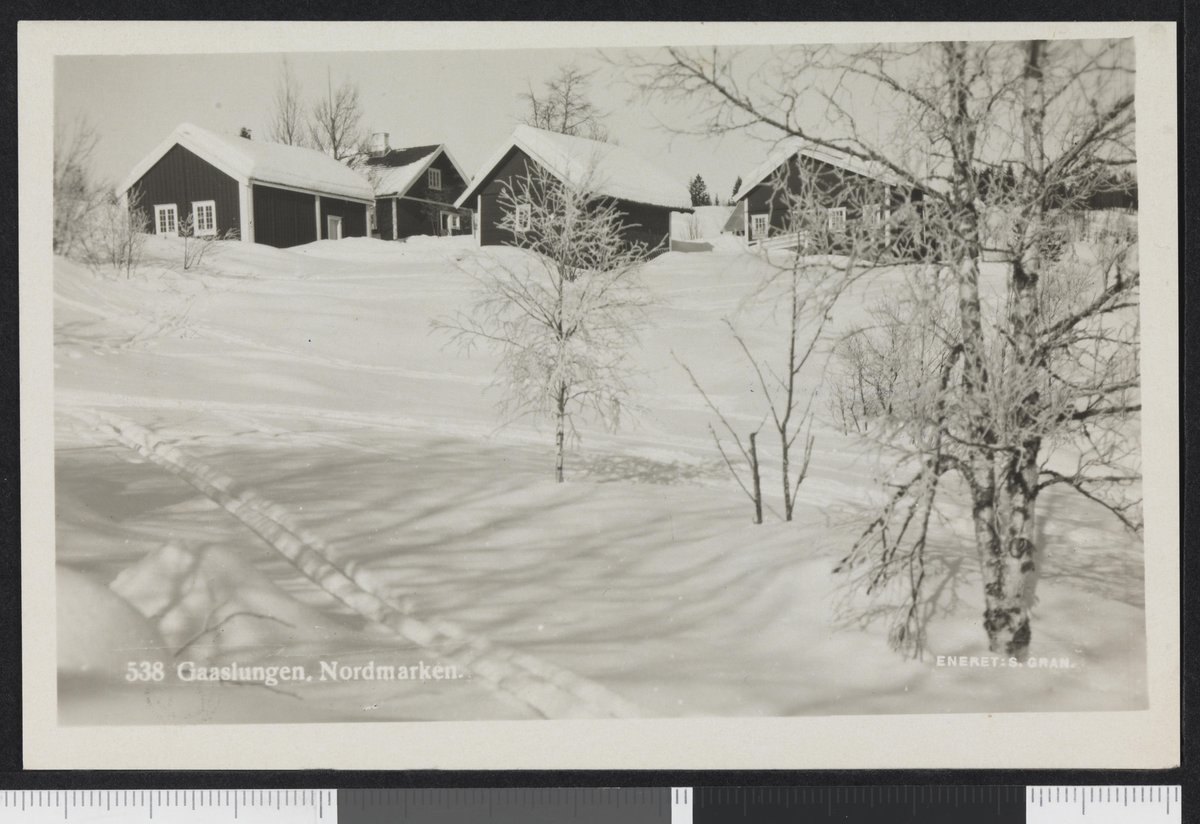
Gåslungen Gård Visiting Hours, Tickets, and Oslo Historical Sites Guide
Date: 03/07/2025
Introduction
Nestled in the heart of Oslo’s Nordmarka forest, Gåslungen Gård is a historic farmstead where Norway’s rural heritage and outdoor culture come alive. Established by Finnish settlers in the late 1600s, the site has evolved from a modest agricultural croft into a vibrant destination that exemplifies the Norwegian spirit of “friluftsliv” (open-air living) and community engagement. Today, visitors can experience a unique blend of history, architecture, and natural beauty, making Gåslungen Gård a must-visit for both locals and tourists seeking an authentic slice of Oslo’s past and present (Lokalhistoriewiki; The Hidden North).
Table of Contents
- Introduction
- Historical Background and Evolution
- Cultural and Natural Significance
- Visiting Gåslungen Gård: Practical Information
- Facilities and Visitor Experience
- Seasonal Activities and Events
- Accessibility and Travel Tips
- Frequently Asked Questions (FAQ)
- Summary and Additional Resources
- References
Historical Background and Evolution
Early Settlement and Finnish Roots
Gåslungen Gård’s history traces back to the late 17th century, when Finnish “skogfinner” (forest Finns) established numerous crofts in Nordmarka. These settlers pioneered slash-and-burn agriculture, shaping both the landscape and local culture. The farm first appears in the 1723 land register as a croft under Liggeren, later associated with Kamphaug, both subordinate to the Nordmarksgodset estate—a reflection of Norway’s traditional land tenure system (Lokalhistoriewiki).
Transition from Working Farm to Cultural Landmark
For much of the 18th and 19th centuries, Gåslungen Gård operated as a modest agricultural holding, producing dairy, meat, and crops for Oslo markets. As the city industrialized in the late 19th and early 20th centuries, the farm gradually shifted from agriculture to recreation, becoming a cherished stop for hikers and skiers exploring Nordmarka (Skiforeningen).
Preservation and Modern Significance
Recognizing the importance of balancing urban growth with conservation, Oslo has safeguarded Gåslungen Gård as a vital part of its cultural and natural heritage. The farm’s traditional timber buildings and original interiors are carefully maintained, providing a tangible link to Norway’s rural past (Store norske leksikon).
Cultural and Natural Significance
Embodying “Friluftsliv” and Community Spirit
Gåslungen Gård remains a living example of “friluftsliv,” serving as a seasonal café and gathering point for outdoor enthusiasts. The farm’s location in Nordmarka—a 430-square-kilometer green lung for Oslo—makes it ideal for hiking, cycling, cross-country skiing, and nature observation. Community volunteerism plays a key role in maintaining trails and supporting recreational infrastructure (Skiforeningen).
Biodiversity and Environmental Stewardship
Situated between the scenic lakes Rottungen and Gåslungen at around 285–310 meters elevation, the farm is surrounded by spruce and pine forests, rolling hills, and abundant wildlife. The region supports moose, deer, foxes, trout, and various bird species. Its ecological value extends to carbon sequestration, water purification, and soil stabilization, underscoring Oslo’s commitment to sustainability (IBN Battuta Travel).
Visiting Gåslungen Gård: Practical Information
Hours and Admission
- General Access: Gåslungen Gård and its surrounding trails are freely accessible year-round, with no entrance fees.
- Café Hours: During the winter ski season (typically December–March), the café operates on weekends and holidays, generally from 10:00 AM to 4:00 PM.
- Special Events: Some guided tours or workshops may require booking and a fee. Always check official resources for up-to-date information.
Getting There
- Public Transport: Take the T-bane (metro) to Sognsvann or Maridalen, then follow well-marked Nordmarka trails (hiking 2–3 hours depending on pace and season, (UT.no)).
- By Foot, Ski, or Bike: Trails to Gåslungen Gård are suitable for hikers, skiers, and cyclists (on designated paths).
- Parking: Available at trailheads like Sognsvann; vehicles are not permitted in protected forest areas.
Accessibility
- Mobility: The terrain is natural and unpaved, making wheelchair access challenging. The farm buildings may also have limited accessibility due to historic construction.
- Trail Conditions: Trails are well-marked but can be muddy in spring or snowy in winter. Appropriate footwear is recommended.
Facilities and Visitor Experience
Farmstead and Rest Areas
Gåslungen Gård features traditional timber buildings from the 18th and 19th centuries, open fields for picnics, and forest clearings ideal for rest stops. The farm’s rustic architecture includes steep roofs and preserved interiors with wood-burning stoves.
Café and Refreshments
A seasonal café serves Norwegian snacks, hot drinks, and sometimes homemade food featuring local ingredients—especially during the ski season.
Toilets and Waste Management
No permanent toilets are available; visitors should follow “leave no trace” principles and carry out all waste.
Overnight Accommodation
On-site accommodation is not offered, but Nordmarka’s DNT (Norwegian Trekking Association) cabins and shelters can be booked nearby (UT.no). Wild camping is allowed under Norway’s “allemannsretten” law, provided campers respect nature and maintain distance from buildings.
Seasonal Activities and Events
Hiking, Skiing, and Nature Observation
- Hiking: Trails of varying lengths and difficulties pass through Gåslungen Gård, offering access to lakes, forests, and historic sites.
- Skiing: In winter, the farm is a hub for cross-country skiers, connected by groomed tracks.
- Wildlife and Birdwatching: The lakes and woodlands are rich in flora and fauna, perfect for nature photography and wildlife observation.
Cultural and Educational Events
The farm sometimes hosts workshops, guided tours, and seasonal gatherings highlighting Norwegian rural traditions, sustainability, and local history. Events may include food tastings, music, and crafts (Daily Scandinavian).
Accessibility and Travel Tips
- Supplies: Bring your own food and water, especially if visiting outside café hours.
- Navigation: Mobile coverage is patchy; download trail maps ahead of time (UT.no).
- Weather: Dress in layers and prepare for sudden changes. Winters require proper ski gear.
- Safety: Inform someone of your route, particularly in winter or if hiking alone.
- Respect Nature: Adhere to “leave no trace” ethics, keep dogs on leashes during nesting season, and avoid disturbing wildlife.
Frequently Asked Questions (FAQ)
Q: Are there official visiting hours or entrance fees?
A: Gåslungen Gård is accessible year-round with no entrance fees. The café is open on winter weekends and holidays (typically 10:00–16:00).
Q: How do I reach Gåslungen Gård?
A: Use public transport to Sognsvann or Maridalen and hike or ski to the farm. Parking is available at trailheads; no vehicle access directly to the site.
Q: Are there guided tours or events?
A: Occasional guided tours and seasonal events are held; check official sites for schedules.
Q: Is the farm wheelchair accessible?
A: No, natural terrain and historic buildings limit accessibility.
Q: Can I camp overnight?
A: Wild camping is allowed in Nordmarka under “allemannsretten.” DNT cabins can also be booked.
Summary and Additional Resources
Gåslungen Gård exemplifies Oslo’s dedication to preserving rural heritage and fostering a sustainable, active lifestyle. Visitors are invited to engage with traditional architecture, enjoy year-round recreation, and participate in cultural events—all within easy reach of the city center (Visit Oslo; Skiforeningen; Lokalhistoriewiki).
Plan your visit:
- Download the Audiala app for trail maps, updates, and guided tours.
- Explore related Oslo historical site guides.
- Follow Gåslungen Gård and Nordmarka on social media for inspiration and event news.
References
- The Hidden North: The History of Oslo
- Lokalhistoriewiki: Gåslungen (småbruk)
- Skiforeningen: Gåslungen Gård
- Store norske leksikon: Gåslungen
- Visit Oslo Official Guide
- Daily Scandinavian: Exploring Oslo Culture, Nature, and Urban Life
- Matias Travel: Must See Oslo Attractions
- UT.no: Hiking Trail Guides
- IBN Battuta Travel: Oslo’s Best Natural Areas


